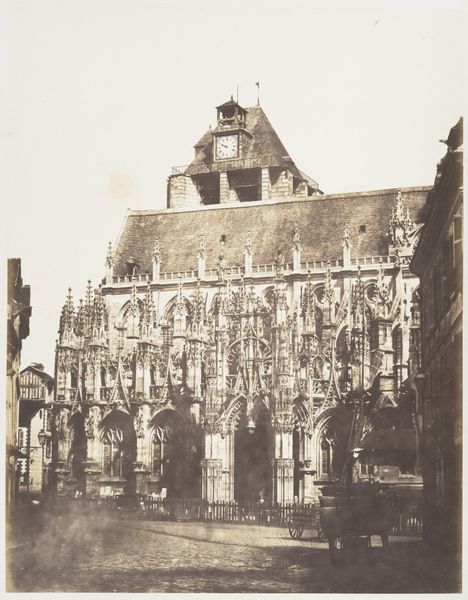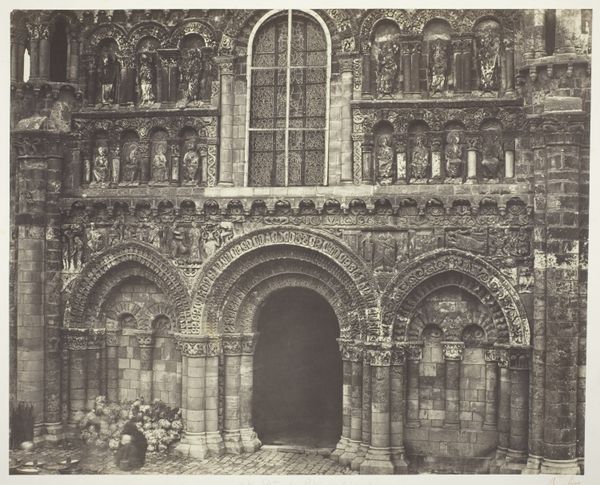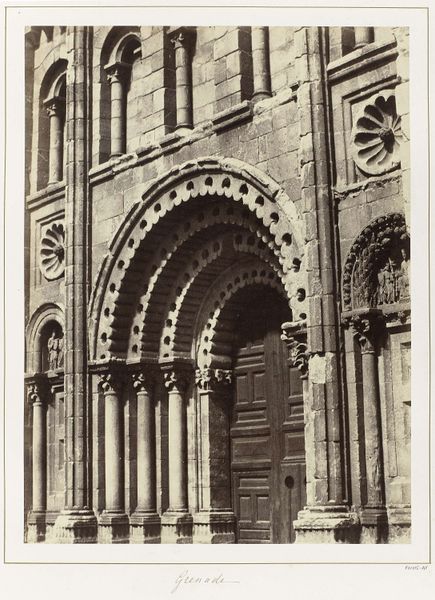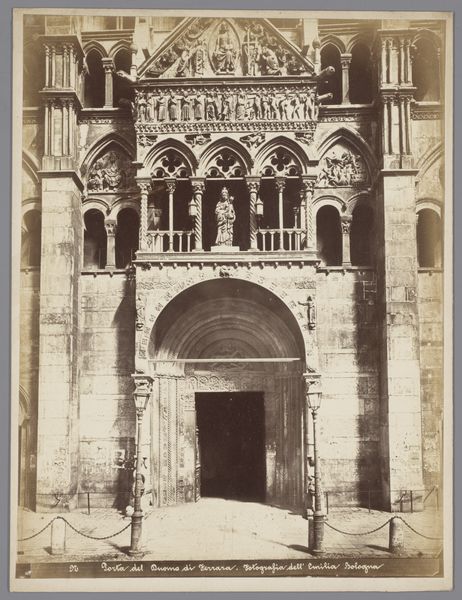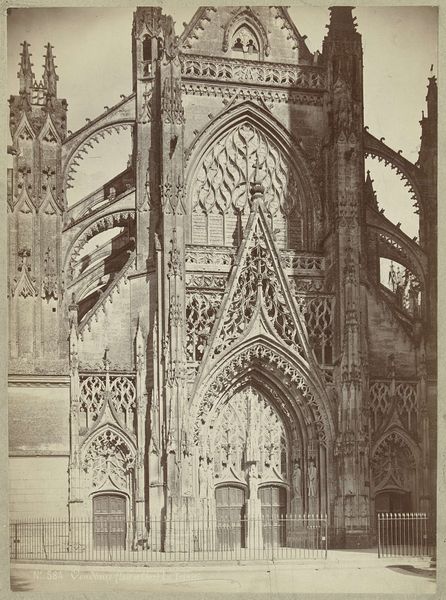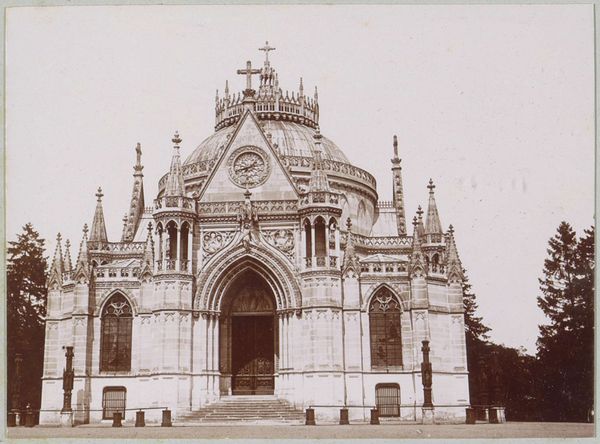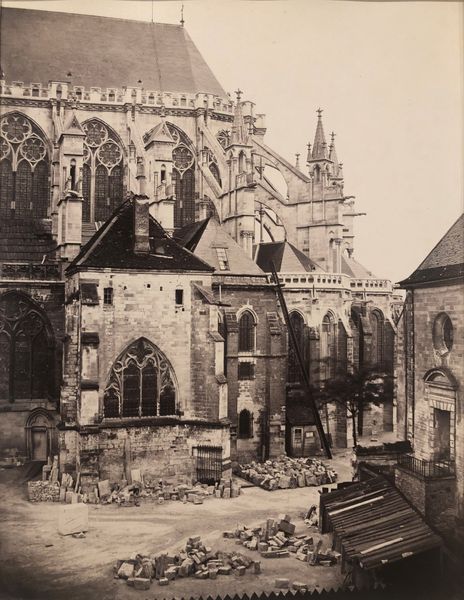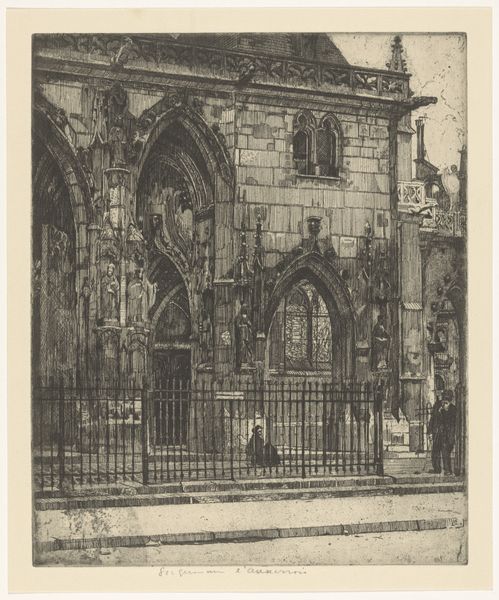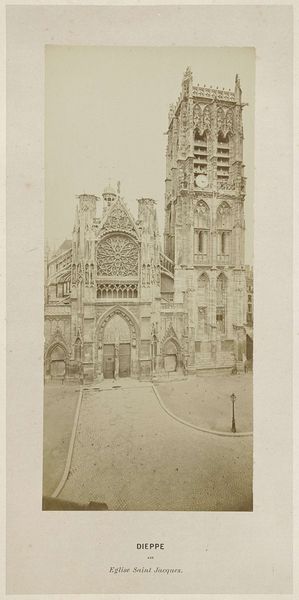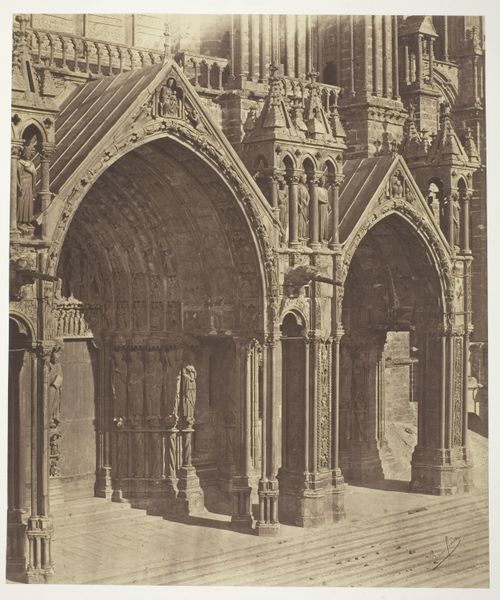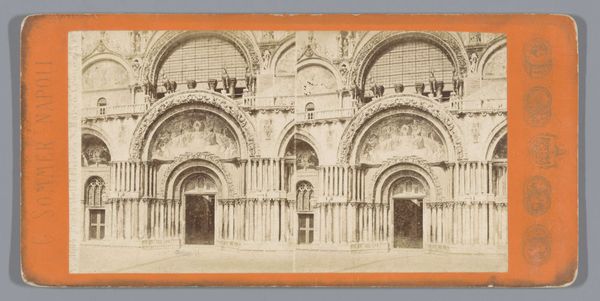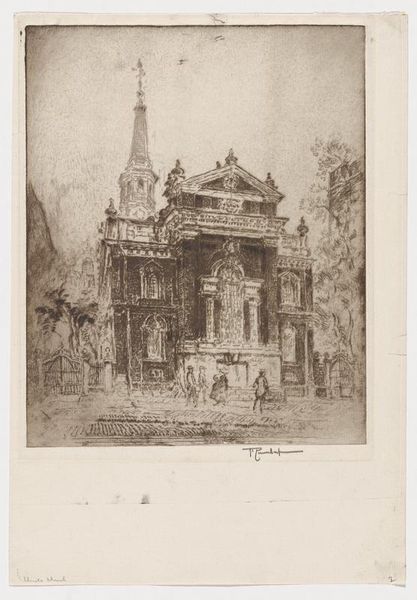
print, photography, architecture
# print
#
landscape
#
photography
#
romanesque
#
historical photography
#
19th century
#
architecture
#
realism
Dimensions: 34.2 x 25.3 cm (13 7/16 x 9 15/16 in. )
Copyright: Public Domain
Curator: We’re looking at Edmond Bacot's "Abside de Saint-Pierre, Caen," taken between 1852 and 1854. It's currently housed here at The Met. Editor: What strikes me immediately is the incredible detail—it's a photograph, but the texture and architectural elements seem almost hyperreal. There’s also a certain melancholy feel, despite the grandeur. Curator: It’s an albumen print, which allowed for that astonishing clarity. The choice of subject, the apse, is deliberate, focusing on the most ornate, structurally complex part of the church. Look at how the light plays on the stonework, emphasizing its volume. Editor: Exactly. And that play of light reveals something of the labour involved. Each carved stone, each window… it’s the accumulated effort of many hands. How was this type of material treated by its workers? Curator: In photographic terms, this would have been a laborious process too. Glass plate negatives required immense patience, coating, exposing, and developing each one meticulously, with materials that were extremely precious at the time. There are so many different hands involved from beginning to end of the creative process. Editor: It also makes me think about the church's role as a major employer—commissions would have sustained entire families of stonemasons, glaziers, and other artisans. But it raises questions, as these architectural projects historically benefit the patrons disproportionately to the exploited workers. Curator: This intersection of the physical space and its inhabitants introduces questions around the photograph as a visual text: it showcases Romanesque architectural forms but also silently presents sociological narratives. Editor: Yes, the social fabric interwoven into the building. And beyond, of course, there were all the processes to gather the resources needed for construction. It forces me to look beyond aesthetic values to assess the whole environment surrounding the historical photograph itself. Curator: A pertinent point, forcing a deeper contextual understanding beyond initial aesthetic admiration. The formal organization, its perspective and play with light, encourages an appreciation for composition while silently presenting an awareness to the construction, process, labour and consumption behind the aesthetic of architecture and the photograph itself. Editor: It becomes a dialogue—between form and context. Thank you.
Comments
No comments
Be the first to comment and join the conversation on the ultimate creative platform.
